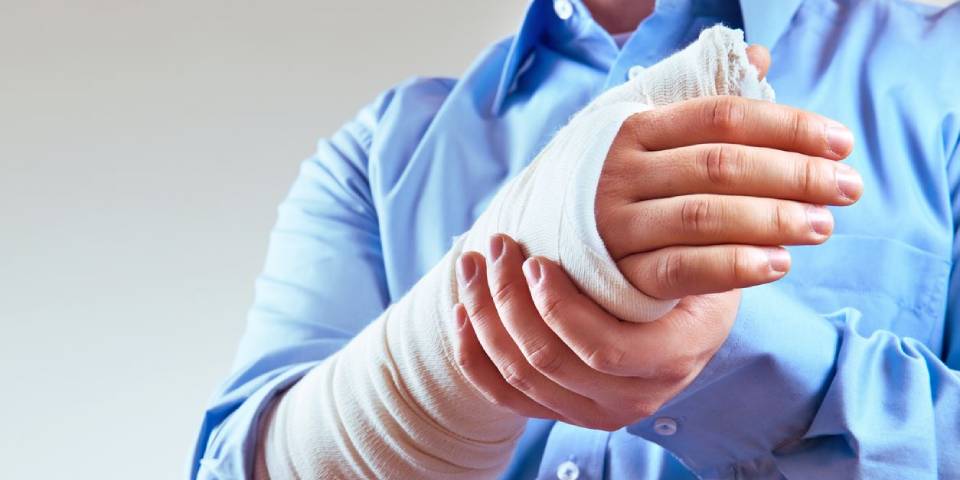
- 05/09/2024
- Dr. Ashwini Gaurav
- 0 Comments
- Blog
What are the signs and symptoms of a broken bone
In today’s world of modern medicine, we’ve made remarkable ways to treat broken bones, thanks to technical knowledge in bone health and fracture management. Recognizing a broken bone early can make all the difference in bettering a smooth recovery and avoiding complications similar to chronic pain or permanent scars.
Fractures can happen to anyone, whether from a fall, an accident, or conditions similar to osteoporosis. It’s important to be aware of the signs that indicate you might have a broken bone. In this blog, Dr. Ashwini Gaurav, the best orthopedic surgeon in Patna explores these crucial signs, helping you to identify when it might be time to seek medical attention. Your health matters, and knowing what to look out for can lead you to the care you need.
What is Considered a Broken Bone?
A broken bone happens when a force is exerted on something stronger than the bone itself, causing it to break or crack.
There are different types of fractures, including
- Simple( Closed) Fracture: The bone breaks but does not pierce the skin.
- Compound( Open) Fracture: The bone breaks and pierces the skin, creating an open crack.
- Hairline Fracture: A fragile crack in the bone that may not be incontinently emphatic.
- Comminuted Fracture: The bone shatters into three or more pieces.
- Greenstick Fracture: The bone bends and cracks, but does not break completely, generally spotted in children.
Signs of Broken Bones:
Recognizing the signs of a broken bone is essential for prompt medical concentration. Dr. Ashwini Gaurav, a leading hip replacement surgeon in Patna, highlights these common indicators to help ensure timely care and operative treatment.
- Severe Pain: A broken bone generally causes violent, sharp pain, especially when trying to move the affected area. The pain may worsen with touch or pressure.
- Swelling and Bruising: The area around the broken bone frequently swells and bruises due to internal bleeding. A lump may appear almost immediately after the injury.
- Deformity: In some cases, the broken bone may cause a visible scar, similar to an unnatural turn or a protruding bone in the case of a compound fracture.
- Limited Mobility: A person with a broken bone may detect it difficult or impossible to move the affected limb or joint. This is especially true if the fracture involves a cargo- bearing bone like the leg.
- Numbness or Chinking: If the break affects near nerves, the person might witness numbness, chinking, or a loss of sensation in the area.
- Grating Sensation: Sometimes, a person with a fracture may feel or hear a grinding or grating sensation when trying to move the affected portion.
What to Do if You Suspect a Broken Bone?
Dr. Ashwini Gaurav knee replacement surgeon in Patna suggests that if you think you or someone other has a broken bone, it’s important to act fast like :
- Stop Moving: Try to immobilize the injured area to prevent more damage. Avoid moving the injured limb or putting weight on it.
- Seek Immediate Medical Attention : Notify your surgeon or pediatrician, and if they can’t see you or your close one right away, go to the nearest emergency room or critical care center. For upper-body breaks, you can generally drive yourself or your loved one to a healthcare facility. However, if you suspect a broken leg or another lower-body injury, do not attempt to move the person yourself. Rather, call 911 and let paramedics safely transport your loved one.
- Splint the Injury: While You Wait While staying for medical help, you can try to carefully splint the injury. Leave the injured limb in the position you found it, and utilize a rolled-up newspaper, magazine, or indeed a piece of cardboard to keep it stable. Wrap the splint securely around the limb, but not too tightly, as this could affect further pain or restrict blood flow. This will limit any unnecessary motion until a doctor can apply a proper cast or splint.
- Apply Ice: Place an ice pack on the injured area to reduce swelling and pain. Make sure to wrap the ice in a cloth to cover your skin.
- Elevate the Injury: If possible, keep the injured limb elevated to reduce the lump.
- Take Pain Relievers: Over-the-counter pain relievers like ibuprofen or acetaminophen can help you manage the pain until you receive medical care.
How Long Does It Take to Heal a Broken Bone?
The healing time for a broken bone varies depending on several factors, including the type of fracture, the bone involved, the person’s age, and overall health. On average:
- Children and Adolescents: Bones typically heal faster, usually within 3 to 6 weeks.
- Adults: Healing may take about 6 to 8 weeks for most fractures.
- Elderly: Healing can be slower, often taking 8 to 12 weeks or more due to lower bone density and other health factors.
During the recovery process, it’s important to follow the doctor’s instructions, which may include wearing a cast or splint, avoiding weight-bearing activities, and attending follow-up appointments to watch the bone’s process.
Recognizing the signs of a broken bone is pivotal for operative reclamation and avoiding complications. However, seek professional help instantly, If you suspect a fracture. Dr. Ashwini Gaurav, a leading orthopedic specialist, offers expert care with a focus on precise diagnosis and personalized treatment. Book an appointment today to ensure you receive the best care for a speedy reclamation

